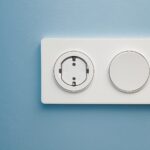In the era of rising electric vehicle (EV) ownership, the demand for home EV chargers is skyrocketing, but with this surge comes a variety of installation challenges. A seamless setup is not always guaranteed, and homeowners often face perplexing issues when connecting their charger to the existing electrical infrastructure. Understanding these challenges is essential to ensure your EV remains charged and ready when you are.
- Uncover frequent installation problems, such as power supply compatibility and wiring issues, that could impede the performance of your EV charger.
- Learn practical troubleshooting methods to diagnose and resolve power supply and wiring issues in your home setup.
- Discover best practices for optimizing your charger’s performance, addressing connectivity and software update issues efficiently.
Navigating the complexities of EV charger installations requires a structured approach to troubleshooting, ensuring that you and your vehicle remain on the move. Dive into this article to equip yourself with essential knowledge and practical tips for a reliable home charging solution.
Identifying Common Electric Vehicle Charger Installation Problems
When setting up an electric vehicle (EV) charger in your home, it’s crucial to be aware of the frequent installation issues you might encounter. Understanding these problems can save you time and frustration, ensuring a smooth setup process.
One of the primary challenges is power supply compatibility. EV chargers demand a significant amount of electricity, and your existing electrical system might not support the additional load. Incompatibility issues can lead to inefficient charging or even damage to your home’s electrical infrastructure.
Wiring issues are another common concern. If the wiring in your home is outdated or insufficient, it will struggle to handle the power requirements of an EV charger. This could result in poor performance or pose serious safety hazards.
Lastly, connectivity constraints can impact the effectiveness of your EV charging setup. Many modern chargers require stable internet connections for software updates and remote monitoring. Ensuring your charging station is within your network’s range is vital for optimal operation.
Diagnosing Power Supply and Wiring Issues in EV Charger Installations
Having recognized the potential challenges, it’s important to know how to diagnose power supply problems and wiring incompatibilities during your EV charger installation. Proper diagnosis is key to a safe and efficient setup.
Begin by assessing the adequacy of your home’s electrical capacity. This involves checking if your electrical panel can accommodate the increased load from the EV charger. You might need to upgrade your electrical panel or install dedicated circuits to support the charger.
Next, evaluate your home’s wiring for compatibility. Ensure the wiring is rated adequately for the charger’s power demands. If your wiring is old or damaged, replacing it with higher-gauge wires might be necessary.
Finally, confirm that all connections are secure and adhere to local electrical codes. Many homeowners find it beneficial to consult a certified electrician for this step, as they bring expert knowledge to efficiently handle these diagnostics and ensure safety.
Optimizing Performance While Troubleshooting Home Setup Issues in EV Charger Installations
Ensuring the optimal performance of your electric vehicle charger is essential for reliable and efficient operation. Addressing common issues such as connectivity problems, software updates, and regular maintenance can significantly enhance your charging setup’s overall efficiency.
Firstly, connectivity issues can arise due to limited Wi-Fi signal strength or outdated firmware. Ensure your charger is within a strong signal range and regularly check for software updates provided by the manufacturer. These updates often contain performance improvements and bug fixes crucial for seamless charger operation.
Moreover, a routine maintenance schedule is vital for the longevity and efficiency of your EV charger. Regularly inspect wiring connections to avoid potential hazards and clean the charging unit to prevent any build-up that might hinder performance.
Implementing these best practices not only improves the current functioning of your EV charger but also prepares it for future smart home integrations. By staying proactive about troubleshooting and maintenance, you contribute to a more sustainable energy management system at home.
Frequently Asked Questions About Electric Vehicle Charger Installations
What is the first step in troubleshooting an EV charger installation issue?
Identify the problem: Begin by examining power supply compatibility, wiring, and connectivity constraints.
How can I check if my home’s electrical capacity is adequate for an EV charger?
Consult an electrician: A professional can assess your electrical panel to ensure it meets requirements for EV charger installations.
What common wiring issues can affect EV charger installation?
- Inadequate gauge wiring
- Poor connections
- Incorrect circuit breaker usage
How can I optimize my EV charger’s performance?
- Ensure regular software updates
- Perform routine maintenance
- Address connectivity issues promptly
Are there any safety considerations during EV charger troubleshooting?
Yes: Always prioritize safety by turning off power before inspecting or repairing, and consult a professional when in doubt.
Can smart home technologies improve the efficiency of my EV charger?
Definitely: Consider implementing smart energy management systems for better performance and efficiency.





